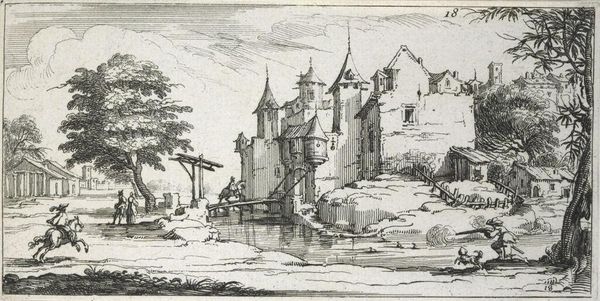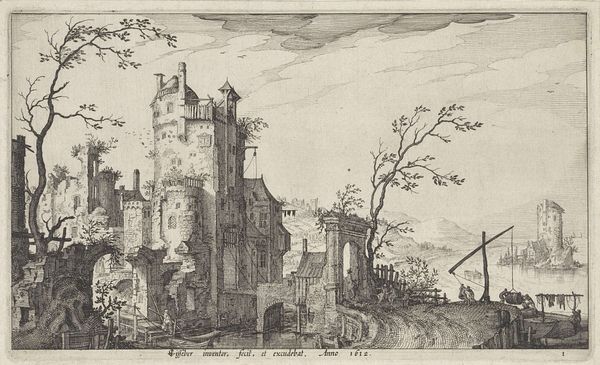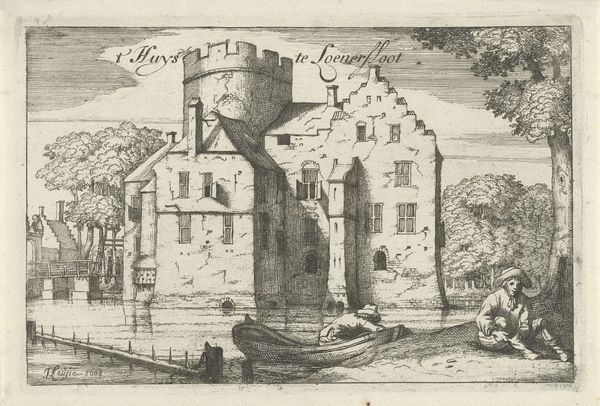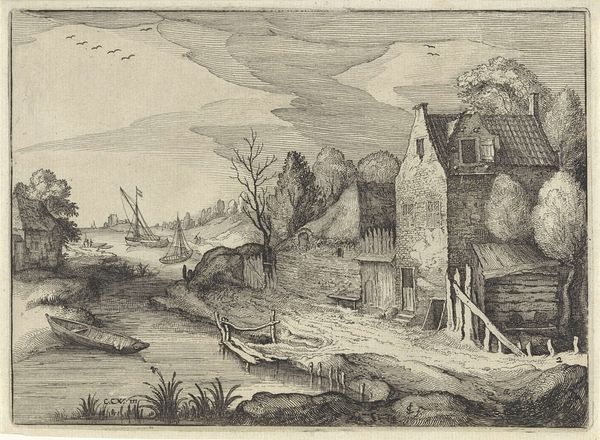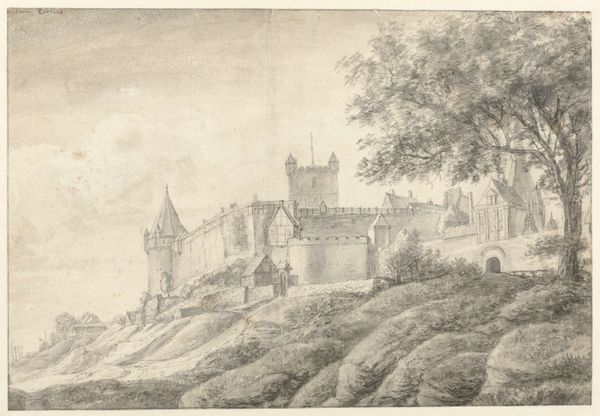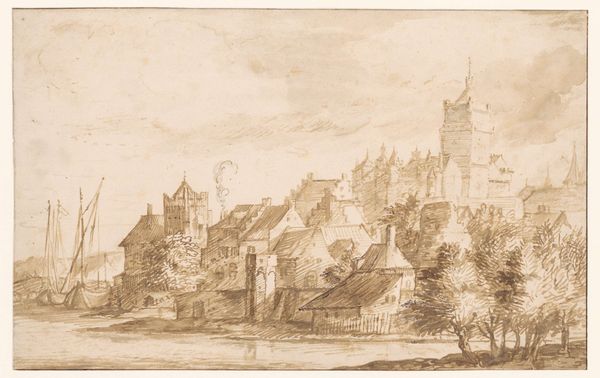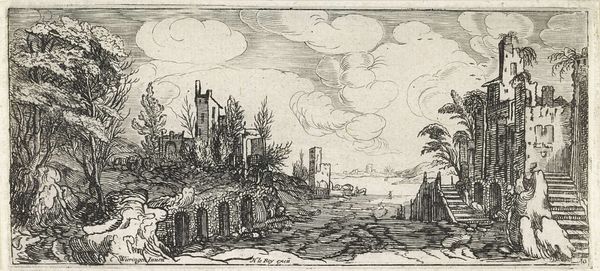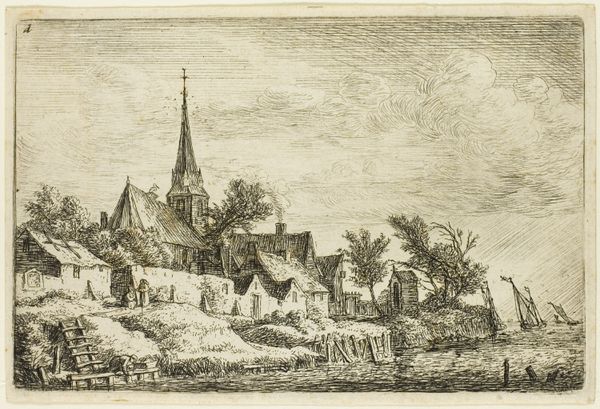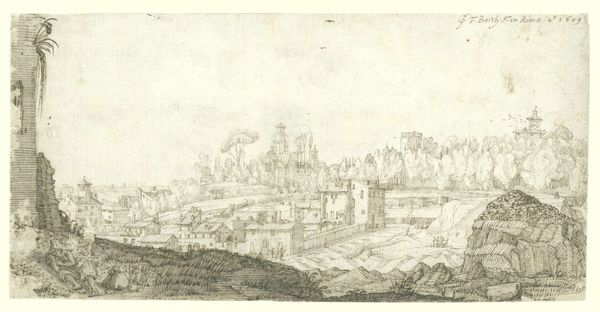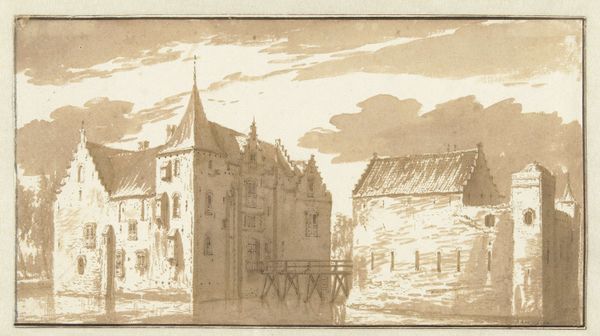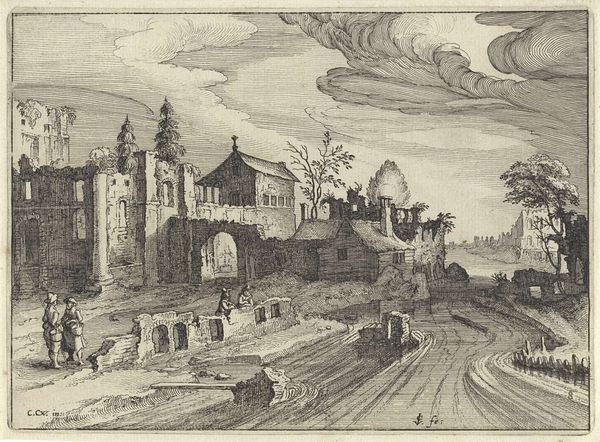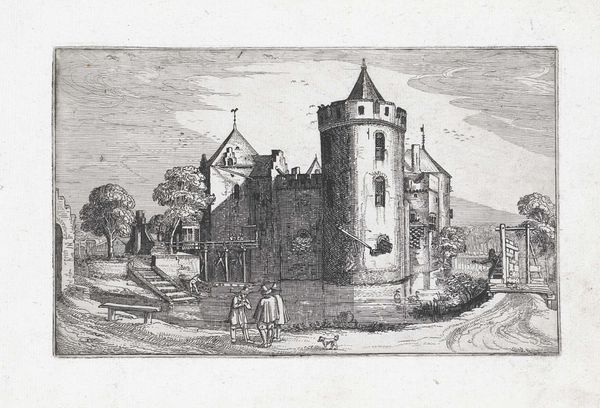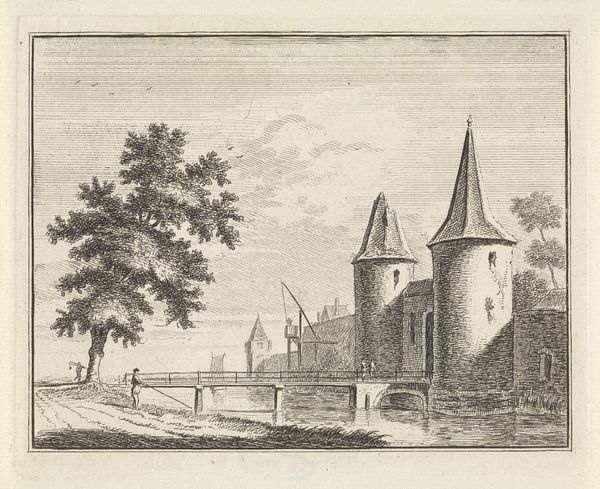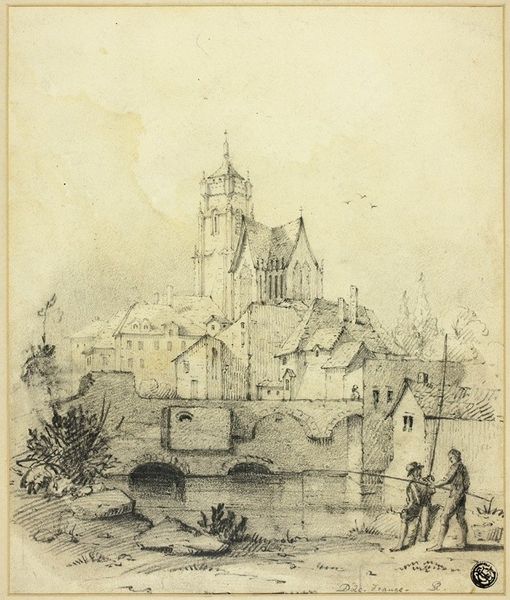
drawing, etching, ink
#
drawing
#
baroque
#
pen drawing
#
etching
#
landscape
#
ink
Dimensions: height 82 mm, width 165 mm
Copyright: Rijks Museum: Open Domain
Curator: Looking at this tiny jewel, "Landscape with a Castle" etched with ink around the mid-17th century by François Collignon, what's your first impression? Editor: Stark. It’s bleak yet…precise? The composition is undeniably dynamic, pulling the eye between the action in the foreground to the castle dominating the scene, yet the whole scene is enveloped in the heavy inking and detail in every small section. It also feels very militaristic given the castle at the time this artwork was made, and the focus of characters possibly in conflict within the artwork's foreground. Curator: Militaristic – interesting! I saw a playful theatricality, like a stage set with quirky characters dotted about, their stories interwoven with this imposing, somewhat fantastical castle backdrop. The etching feels so delicate, yet packs a real narrative punch. Do you think there are possible religious tensions, considering Collignon's historical period? Editor: It's possible. In mid-17th century Europe, landscape art was absolutely never just about pretty views and serene reflections, religious and sociopolitical undertones are everywhere. Etchings such as this became more secular yet it still possibly retains themes of hierarchy and feudalism, perhaps critiquing or questioning them through imagery rather than direct statement, due to restrictions in expressing particular political views. Look at how small the ordinary people seem! Curator: Exactly! It's all meticulously arranged to send a message, a commentary on power, maybe? Or the way power affects daily life? The artist could be satirizing, humanizing or even glorifying the structure and function of power structures within society at the time through how small the average worker on the bridge is drawn compared to the grand castle. The composition itself also frames how power could be attained. Editor: I'm looking at that cluster of people towards the right…Are they hunting, fishing, what’s going on? Maybe there’s commentary on how humans relate with not just systems, but nature itself, even in times of possible conflict as you look in the foreground. And is that supposed to be some sort of religious allegory occurring with the pair of humans closest to us? There’s something in the small human detail which also indicates commentary. Curator: Perhaps the very details indicate Collignon is showing all different facets of human existence in this era? From hierarchy to working with nature itself, there's many commentaries made at once and with little nuance given how the message is conveyed. Editor: Well, the conversation that’s evoked here proves its value then, right? Even a relatively unknown piece of artwork such as this has multiple layers to unpack, indicating why landscapes are valuable pieces of socio-political reflection.
Comments
No comments
Be the first to comment and join the conversation on the ultimate creative platform.
